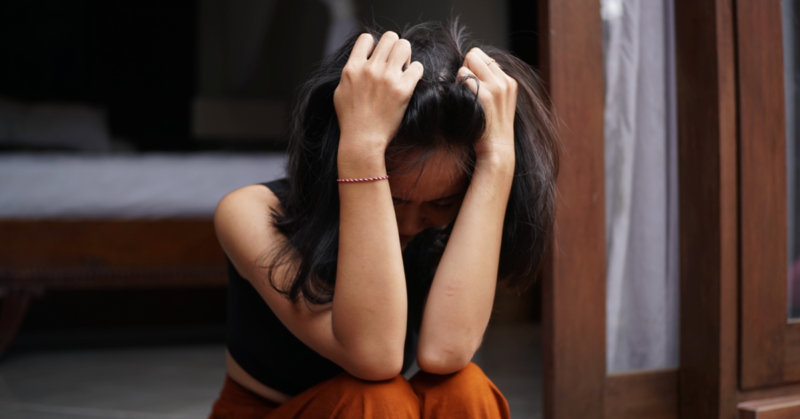
Table of Contents
Increase in Suicide, Hospital Visits Showcases Teen Mental Health Crisis

Written By: Alex Bachert, MPH

Clinically Reviewed By: Dr. Jaime Ballard
October 10, 2022
5 min.
Data from the CDC and other sources reveals new insights on how the COVID-19 pandemic has affected the mental health of today’s youth.
Learn more about our Clinical Review Process
Table of Contents
October 10 is World Mental Health Day. First established by the World Federation for Mental Health in 1992, the international initiative prioritizes mental health education, awareness, and advocacy. Since then, each year marks a concerted effort to further reduce the social stigma surrounding mental health and wellness—an area where we’ve seen great progress over the last few years.
Some of the early World Mental Health Day themes focused on improving the quality of mental health services or addressing the mental health needs of specific populations—such as women, children, the aging population, and the workforce.
In 2019, the annual initiative centered around suicide prevention. Interestingly, this happened to coincide with a decrease in suicide rates (though we’re not suggesting causation). After a 35 percent increase in suicide rates over the last two decades, 2019 marked a drop for the first time in years—largely credited to broader awareness and accessibility to mental health and crisis resources.
Then, the COVID-19 pandemic hit. Just last month, The Centers for Disease Control and Prevention (CDC) published a report which focused on how the pandemic influenced one of the greatest mental health threats to our country: suicide. According to the findings, suicide rates increased from 2020 to 2021—leading to more than 130 suicide deaths per day. That translates to nearly 50,000 deaths in one year, with the most notable increases observed in males and females ages 15–24 years.
Earlier this year, the CDC issued another report that highlighted the pandemic’s direct effect on an “accelerating mental health crisis among adolescents.” Based on data from a 2021 survey of public- and private-school high school students across the U.S., the CDC reported that more than four in 10 teens feel persistently sad or hopeless and one in five have seriously considered suicide.
Although it’s hard to define trends based on one year’s worth of data, these suicide rates represent a greater problem: a worsening mental health crisis among the nation’s youth. Below, Charlie Health reviews recent data and breaks down several of the potential causes contributing to the teen mental health crisis.
Do you need more support with
your mental health?
Charlie Health can help.
A look at the findings
As we’ve talked about before, suicide is a leading cause of premature death for teens and young adults. Nine percent of teens in the U.S. have attempted suicide, and suicide is now the fourth leading cause of death in adolescents ages 15-19 years across the globe.
The newly published CDC report identified several important findings regarding suicide rates in 2020 versus 2021. Important to note, however: these are provisinal findings which means that the data might still be incomplete.
- Suicides increased over 1 year The number of suicides in 2021 was 4 percent higher than in 2020, but still 1 percent lower than the peak in 2018.
- Suicide was more common among males than females The increase in the number of suicides was greater for males (4 percent) than females (2 percent), with the 2021 suicide count nearly four times higher for males (38,025) than females (9,621).
- Girls experienced a spike in suicides Suicide deaths among girls ages 10-14 years increased more than any other group (15 percent), but this wasn’t found to be statistically significant due to the small number of cases (204 deaths in 2020 and 237 in 2021).
- Young men were also greatly impacted Males ages 15-24 years also experienced a statistically significant increase in suicide rates (8 percent), though rates also increased for males 25-34 years.
While this report didn’t provide any additional information about suicide attempts, previously published data show an increase in emergency department visits for suspected suicide attempts among adolescents ages 12-17 years, especially among girls. Further, teen girls are far more likely to visit the emergency room for suspected suicide attempts than are teen boys, although boys are more likely to die by suicide.
An organization called Clarify Health Institute offers another perspective on how the pandemic has impacted the mental state of our nation’s youth. Based on 2016-2021 health insurance claims from more than 20 million children ages 1-19 years, they also identified an increase in hospital utilization.
- A 61 percent increase in mental health inpatient hospital admissions (from 30 to 48 visits annually per 1,000 patients)
- A 20 percent increase in mental health emergency department visits (from 55 to 66 visits annually per 1,000 patients)
- Significantly higher rates of mental health inpatient admissions and emergency department utilization among teenagers compared to younger children. Inpatient admissions increased 84 percent among girls and 83 percent among boys ages 12-15 years.
A look beyond the data
Although parents, providers, and medical organizations like the American Academy of Pediatrics largely agree that the pandemic has had a negative impact on the mental and emotional health of teens, we’re still working to understand the picture painted by data collected over the last two years.
“We already know that more young people than ever are suicidal, but further complicating the picture is that these issues don’t affect all communities equally,” shared Dr. Eli Muhrer, M.D., Medical Director at Charlie Health. According to The Trevor Project, nearly half of LGBTQIA+ youth seriously considered suicide in the past year (compared to 1 in 5 teens overall), and low-income teens are more likely to be prescribed potentially unnecessary antipsychotic drugs than their higher-income peers. “Access to potentially life-saving mental healthcare is a major public health disparity, especially in BIPOC communities, and the pandemic has only exacerbated these changes,” Muhrer continued.
As Charlie Health’s Co-Founder & Chief Clinical Officer Dr. Caroline Fenkel has previously shared, social isolation—before, during, and after the pandemic—is also likely to play a role in the teen mental health crisis. Loneliness and isolation are contributors to some of the trends shown in the previously mentioned data—including an increase in anxiety, major depressive episodes, emergency room visits, and suicide attempts.
And while it’s becoming easier to access crisis services, barriers to mental health care continue to be a problem for teens and young adults. In an effort to reduce suicide rates, especially among adolescents, there is now a new National Suicide Prevention Lifeline that makes it easier for people to access immediate mental health support.
If you or someone you know is experiencing a mental health crisis, you can simply call or text the number 988 to reach a trained crisis counselor. (Learn more here.)
Connect with Charlie Health
Charlie Health offers virtual mental health treatment programs for high acuity adolescents, young adults, and their families in a safe and supportive environment. Unlike traditional online therapy programs, our intensive outpatient treatment program offers high-quality treatment for clients who need more than once-a-week therapy sessions. Our compassionate, experienced team of clinicians is here to listen to your needs, answer your questions, and help you start the healing process today.
References
https://www.cdc.gov/mmwr/volumes/71/su/su7103a3.htm?s_cid=su7103a3_w
https://www.charliehealth.com/post/teen-mental-health-fact-sheet
https://www.cdc.gov/nchs/data/vsrr/vsrr024.pdf
https://afsp.org/suicide-statistics/
https://www.who.int/news-room/fact-sheets/detail/adolescent-mental-health
https://www.cdc.gov/mmwr/volumes/70/wr/mm7024e1.htm
https://www.thetrevorproject.org/survey-2022/
https://www.charliehealth.com/post/isolations-silent-role-in-the-teen-mental-health-crisis
https://www.charliehealth.com/post/everything-you-need-to-know-about-the-new-suicide-crisis-lifeline





